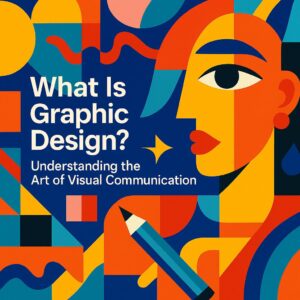 Graphic design is the art of creating visual content to communicate messages. By applying visual hierarchy and page layout techniques, designers use typography and pictures to meet users’ specific needs and focus on the logic of displaying elements in interactive designs to optimize the user experience. At Vero Q&A, through our World-Wide Q&A initiative, we explore the multifaceted world of graphic design, delving into its history, principles, and significance in today’s digital age.
Graphic design is the art of creating visual content to communicate messages. By applying visual hierarchy and page layout techniques, designers use typography and pictures to meet users’ specific needs and focus on the logic of displaying elements in interactive designs to optimize the user experience. At Vero Q&A, through our World-Wide Q&A initiative, we explore the multifaceted world of graphic design, delving into its history, principles, and significance in today’s digital age.
Understanding Graphic Design
Graphic design encompasses various disciplines, including branding, advertising, web design, and print media. It’s about conveying ideas through visuals, ensuring that the message is not only seen but also understood and felt.
Historical Context
The roots of graphic design trace back to ancient civilizations, where visual storytelling was evident in cave paintings and hieroglyphics. The invention of the printing press in the 15th century revolutionized the dissemination of information, leading to the evolution of design in books and posters. The 20th century saw the rise of modern graphic design, influenced by movements like Bauhaus and Swiss Design, emphasizing minimalism and clarity.
Core Principles of Graphic Design
- Balance: Achieving visual equilibrium in designs.
- Contrast: Highlighting differences to create emphasis.
- Alignment: Ensuring elements are visually connected.
- Repetition: Creating consistency and unity.
- Proximity: Grouping related items together to declutter designs.
Essential Tools for Graphic Designers
- Software: Programs like Adobe Photoshop, Illustrator, and InDesign.
- Hardware: High-resolution monitors, graphic tablets, and quality printers.
- Resources: Access to stock images, fonts, and design templates.
Applications of Graphic Design
Graphic design plays a pivotal role in various sectors:
- Brand Identity: Crafting logos, business cards, and brand guidelines.
- Marketing & Advertising: Designing brochures, flyers, and digital ads.
- Web & App Design: Creating user-friendly interfaces and experiences.
- Publishing: Layout designs for magazines, books, and newspapers.
- Packaging: Designing product packaging that attracts consumers.
The Evolution of Graphic Design
With technological advancements, graphic design has transitioned from print to digital platforms. The rise of the internet and mobile devices has expanded the scope of design, introducing new challenges and opportunities in user experience (UX) and user interface (UI) design.
Graphic design is an ever-evolving field that combines creativity with strategy to communicate messages effectively. It’s an integral part of our daily lives, influencing how we perceive information and interact with the world around us. Through our Vero Q&A, we continue to explore and celebrate the dynamic realm of graphic design, providing insights and inspiration for artists and enthusiasts globally.